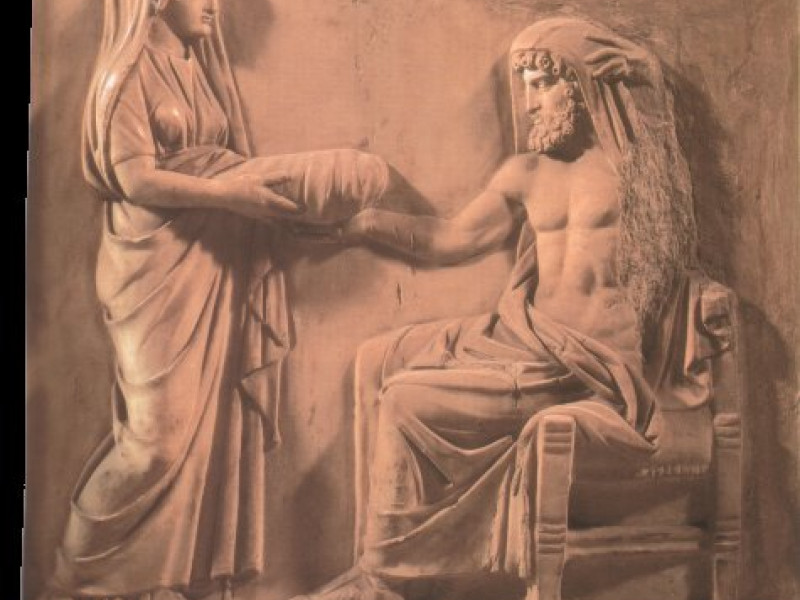Otus and Ephialtes
Otus and Ephialtes were twin giants. They were the sons of Poseidon and Iphimedeia, who was wife of Alöeus. Though the twins' father was Poseidon, they were often called the Aloadae, after Alöeus, who was also the son of Poseidon and Canace.
By the time they were nine, the giants had reached a towering height of fifty feet tall. They were the first to worship the Muses.
With their rapid growth, they became arrogant and hostile to the gods. They wanted to replace the gods in Olympus, so they began piling Mount Pelion on Mount Ossa, hoping to the reach the home of Olympians.
They even managed to capture Ares, binding the war god and stuffing him into a bronze jar. Ares would have died of starvation and thirst after being confined in the jar for thirteen months. Luckily, the twins' stepmother told Hermes where they had hidden Ares. Hermes released the half-dead Ares out of the bronze jar.
Zeus would have destroyed Otus and Ephialtes, had Poseidon not promised to distract his hostile sons.
However, this did not end their plots against the gods. Otus wanted to marry the virgin goddess Artemis, while Ephialtes wanted to take Hera as his wife. The twins set about capturing Artemis. Artemis led the twin giants on a merry chase to the island of Naxos. Artemis distracted them by changing herself
into a beautiful white deer.
So the twins began to chase the deer instead. In the forest, both of them thought they had trapped the deer. Both hurled their spears at the deer, which vanished out of thin air. Each spear killed the other brother.
By Jimmy Joe




